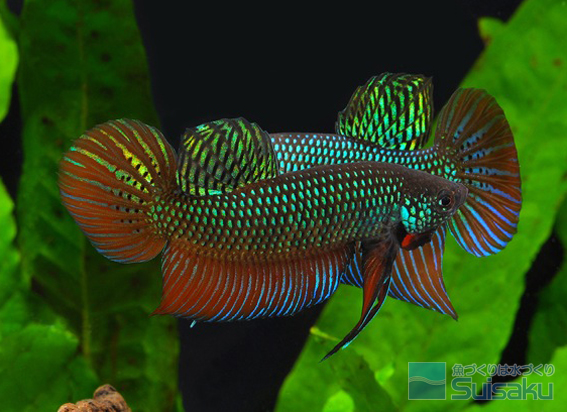
In this column, we have introduced several wild bettas that belong to the Splendens group. Other colorful wild bettas that live in Borneo and elsewhere are fairly popular without being introduced, but bettas belonging to the Splendens group tend to be looked down upon even among enthusiasts. The reason why I am actively covering them in this column is because I want to draw some attention to these people who tend to be in the shadows, and I want people to come here and learn more about the charm of these people who have been segmented. be.
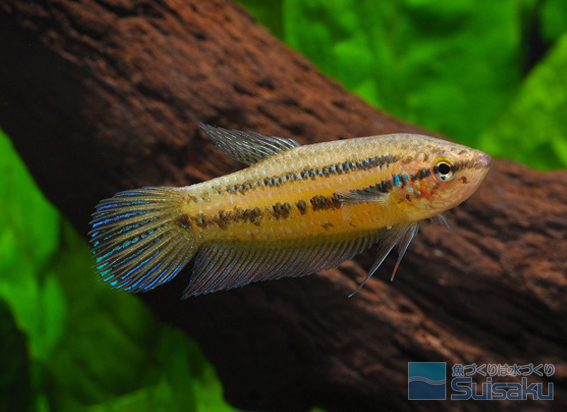
The Betta Smaragdina that I will be introducing this time is one of my favorite types, so much so that it ranks among my top 5 wild Bettas among the many known types. There are several reasons for this. One is that this is the type of fish that I first bred and bred about 30 years ago. The first wild betta I photographed was also of this species. Just as no one can forget their first love, the experience of my first wild betta still leaves a strong impression deep in my memory. I will never forget seeing the emerald-colored nuptials for the first time and being transfixed in front of the aquarium, witnessing the moving breeding scene.
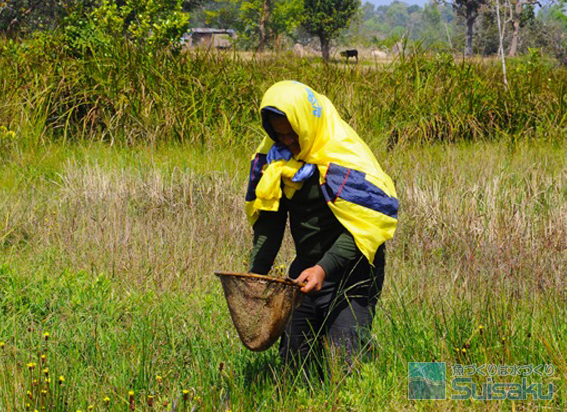
Another reason is that this is the second wild betta that I have collected with my own hands. When I started visiting the fields in Southeast Asia, the first thing I collected was a Betta prima from Chanthaburi in eastern Thailand, which unexpectedly came into my net. Although it was an undescribed species at the time, it was my first mousebrooding betta, and that's how I got hooked on wild bettas, and about six months later, I was able to scoop it up with my own hands.This was the real Bubble Nest Builder species. there were. After that, I wandered around the Malay Peninsula and Borneo Island in search of wild bettas, and saw and collected many different species with my own eyes, but my memories of this species and Betta macrostoma are in a class of their own.
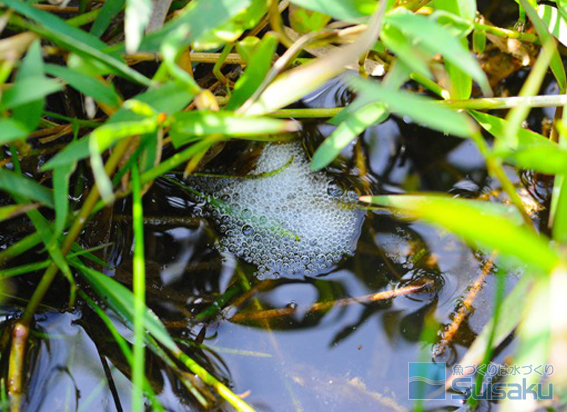
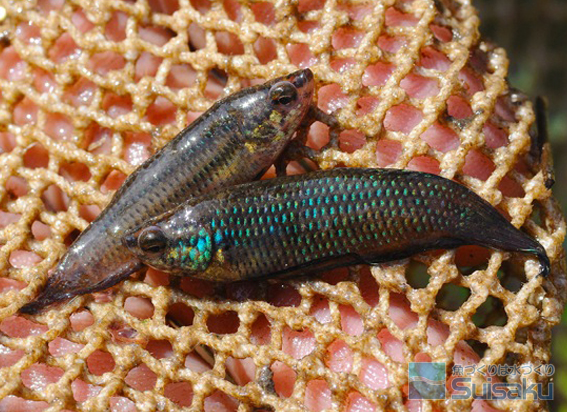
In the past, my goal was to create an illustrated encyclopedia of wild betta fish, so I went to their habitats and energetically photographed and collected them, ignoring the profitability of my work. However, once he finished publishing his encyclopedia, his enthusiasm gradually waned, and to be honest, he has lost much interest in wild bettas over the past ten years. However, a new species called Betta stictos was discovered in the Splendens Group's Wild Betta, which was thought to be no longer a new species. I went to the insecure interior of Cambodia to collect Betta Styctos, and my success in collecting it revived my passion for wild Betta fish. In particular, interest in Smaragdina, which is closely related to Styctos, has increased again.
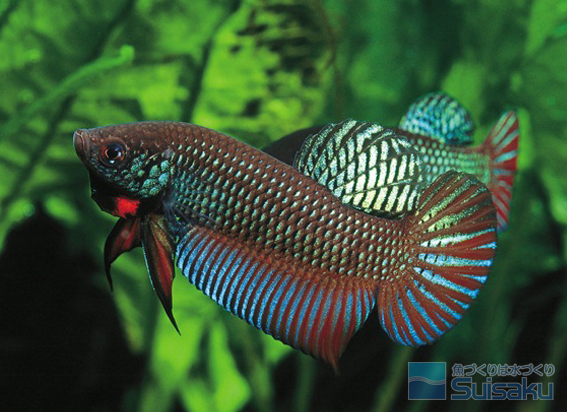
Let me briefly introduce this species here. Betta smaragdina was described in 1972, and has long been popular among wild bettas. The male's body color turns emerald green during the breeding season, which is why it is called the emerald betta. Its scientific name, smaragdina, comes from the Latin word meaning emerald color.
It mainly lives in still water areas such as wetlands, ponds, and swamps, and is a typical bubble nest builder (a species that breeds by creating bubbles with air). Its distribution center is in an area called Isan in northeastern Thailand, but it is also distributed as far as Savannakhet and Vientiane in Laos in the Mekong River basin. It is probably the most northern betta species.
This species is distributed over such a wide range, and it is known that there are regional variations in shape and color depending on where it lives. To prevent genetic interbreeding between fish from different habitats, enthusiasts distinguish the species by naming them after their habitats.
The most famous production areas are those in northeastern Thailand, such as Ubon and Nong Khai. These were imported commercially and were relatively easy to obtain, but it is sad that they are rarely seen these days. This species is not very combative, so it is possible to keep multiple males in a spacious aquarium.
However, once they are bred individually, they become more aggressive and it becomes impossible to keep more than one. In the suburbs of Vientiane, Laos, this species is apparently used as a fighting fish, and I often saw them for sale along the roads.
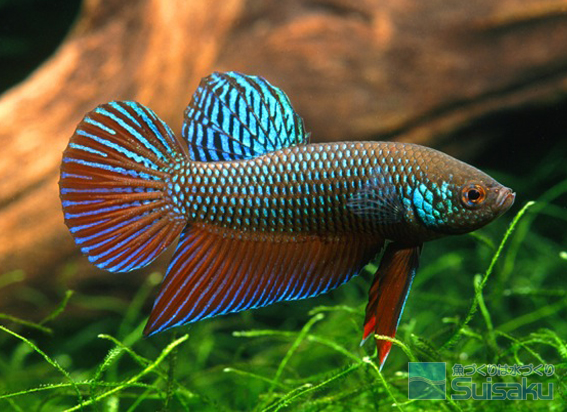
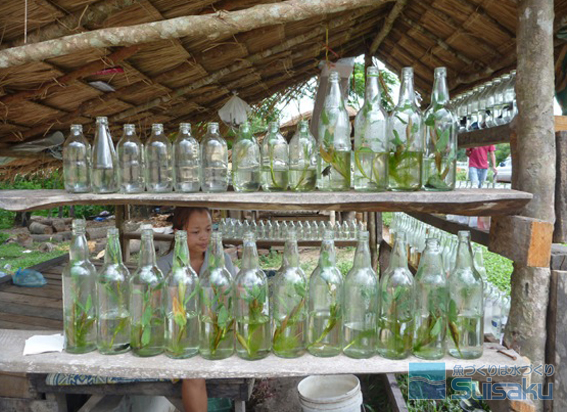
Now let's get back to the topic. Although I had a hiatus for a while, my passion for wild bettas has returned since collecting Styctos, so I decided to start over with the Splendens group, and have been working hard to catch bettas in various places in recent years.
It is difficult to distinguish the species of small juvenile fish or individuals that have just been collected because their colors are washed out, but if you can bring out their conjugal colors in captivity, it is not difficult to distinguish their characteristics. What I found was a betta fish from Sihanoukville, Cambodia, which was introduced in this column.
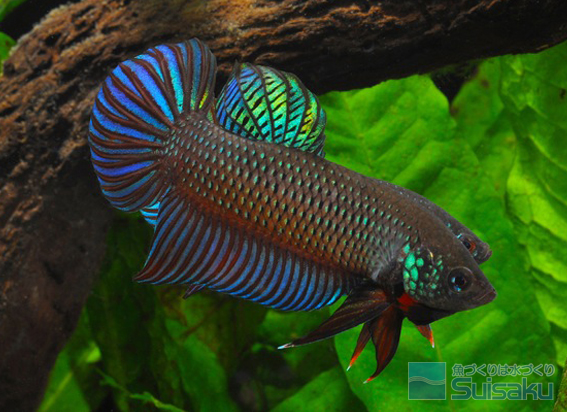
Regarding Smaragdina, an interesting new population is the one from Chayaphun, Thailand. The local population has a relatively stocky body, with males having short fins even as adults. What is interesting is that in many individuals, the central part of the caudal fin is slightly elongated.
This is a characteristic found only in the Splendens group of fish, Betta mahachaiensis, and not in other populations of Smaragdina. It is also slightly more reddish than other populations. The habitat of this species in Chayapun is hilly wetlands rather than lowland wetlands, making it a slightly different habitat from other known populations.
Recently, it seems that research is being conducted on the species of the betta fish, not only on their external morphology but also on the genetic level, so I look forward to seeing the results of future research.

Although the information is not yet confirmed, this species from Savannakhet, Laos, also shows differences at the genetic level, and there seems to be a movement to make it independent as a separate species from this species. This species, which had such a wide distribution range, is likely to be subdivided in the future. There is a lot of interest in finding out where the boundaries of the distribution range are with Styctos, a closely related species that looks relatively similar. It looks like Splendence Group's Wild Betta will satisfy my curiosity for a while yet.













